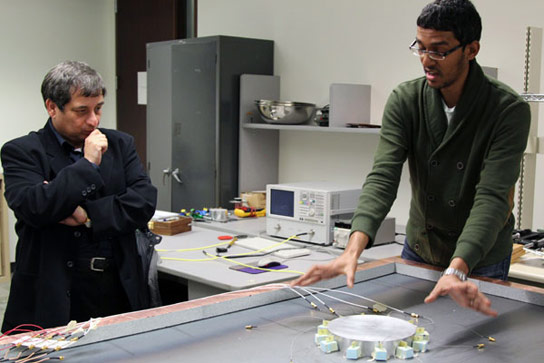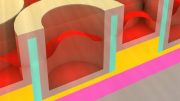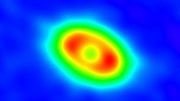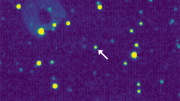
Professor George Eleftheriades and PhD student Michael Selvanayagam with their new approach to cloaking. Credit: Marit Mitchell
By surrounding an object with small antennas that collectively radiate an electromagnetic field, engineers demonstrate active electromagnetic cloaking.
Invisibility cloaking is no longer the stuff of science fiction: two University of Toronto researchers have demonstrated an effective invisibility cloak that is thin, scalable, and adaptive to different types and sizes of objects.
Professor George Eleftheriades and PhD student Michael Selvanayagam of The Edward S. Rogers Sr. Department of Electrical & Computer Engineering designed and tested a new approach to cloaking – by surrounding an object with small antennas that collectively radiate an electromagnetic field. The radiated field cancels out any waves scattering off the cloaked object.
“We’ve taken an electrical engineering approach, but that’s what we are excited about,” says Eleftheriades. “It’s very practical.”
Picture a mailbox sitting on the street. When light hits the mailbox and bounces back into your eyes, you see the mailbox. When radio waves hit the mailbox and bounce back to your radar detector, you detect the mailbox. Eleftheriades’ and Selvanyagam’s system wraps the mailbox in a layer of tiny antennas that radiate a field away from the box, canceling out any waves that would bounce back.
In this way, the mailbox becomes undetectable to radar.
“We’ve demonstrated a different way of doing it,” says Eleftheriades. “It’s very simple: instead of surrounding what you’re trying to cloak with a thick metamaterial shell, we surround it with one layer of tiny antennas, and this layer radiates back a field that cancels the reflections from the object.”
Their experimental demonstration effectively cloaked a metal cylinder from radio waves using one layer of loop antennas. The system can be scaled up to cloak larger objects using more loops, and Eleftheriades says the loops could become printed and flat, like a blanket or skin.
For now, the antenna loops must be manually attuned to the electromagnetic frequency they need to cancel. But in the future, researchers say, they could function both as sensors and active antennas, adjusting to different waves in real time, much like the technology behind noise-canceling headphones.
Work on developing a functional invisibility cloak began around 2006, but early systems were necessarily large and clunky – if you wanted to cloak a car, for example, in practice you would have to completely envelop the vehicle in many layers of metamaterials in order to effectively “shield” it from electromagnetic radiation. The sheer size and inflexibility of that approach makes it impractical for real-world uses.
Earlier attempts to make thin cloaks were not adaptive and active, and could work only for specific small objects.
The cloaking technology holds possibilities that go beyond obvious applications such as hiding military vehicles or conducting surveillance operations. For example, structures that interrupt signals from cellular base stations could be cloaked to allow signals to pass by freely.
The system can also alter the signature of a cloaked object, making it appear bigger, smaller, or even shifting it in space. And though their tests showed the cloaking system works with radio waves, re-tuning it to work with Terahertz (T-rays) or light waves could use the same principle as the necessary antenna technology matures.
“There are more applications for radio than for light,” says Eleftheriades. “It’s just a matter of technology – you can use the same principle for light, and the corresponding antenna technology is a very hot area of research.”
Reference: “Experimental Demonstration of Active Electromagnetic Cloaking” by Michael Selvanayagam and George V. Eleftheriades, 12 November 2013, Physical Review X.
DOI: 10.1103/PhysRevX.3.041011









“For example, structures that interrupt signals from cellular base stations could be cloaked to allow signals to pass by freely.”
If I understood correctly, the ‘cloak’ is cancelling out the emitted waves. Shouldn’t this be the same as absorbing or reflecting them, effectively blocking the signal from the other side?
Understood it so as well.. dunno how the writer thinks that the antennas on the side not facing the cellular tower would know what they would have to send out, so that the whole object would become ‘transparent’ from a position behind the shadowing object.
And if the researchers really said that in their paper.. well, that is far far off into the future.
Receiving electromagnetic waves and not reflecting them is one thing. Moving the received energy around the object in question and transmitting it correctly is another..
Quote:
“But in future, researchers say, they could function both as sensors and _active antennas_ …”